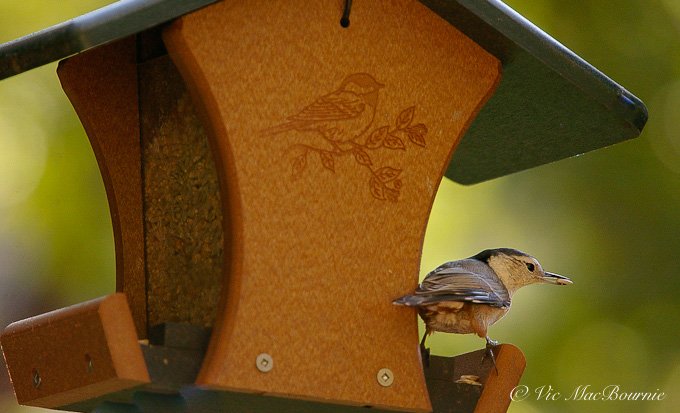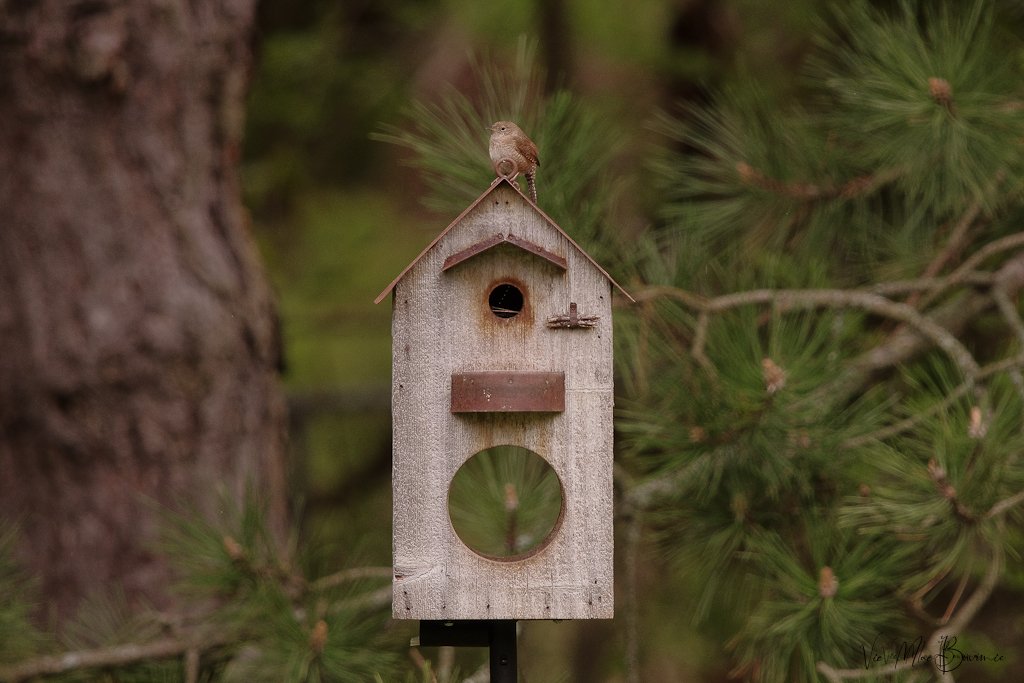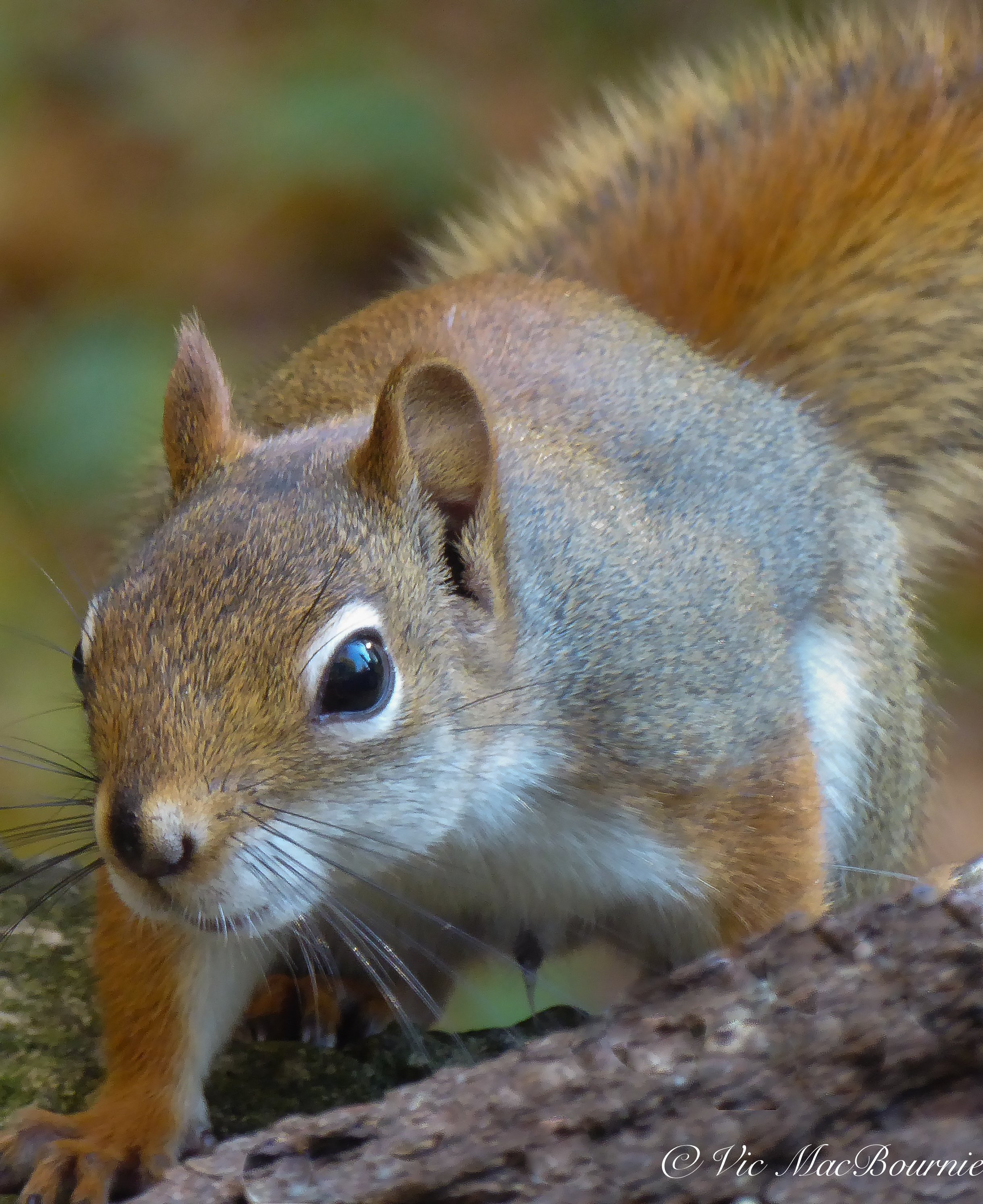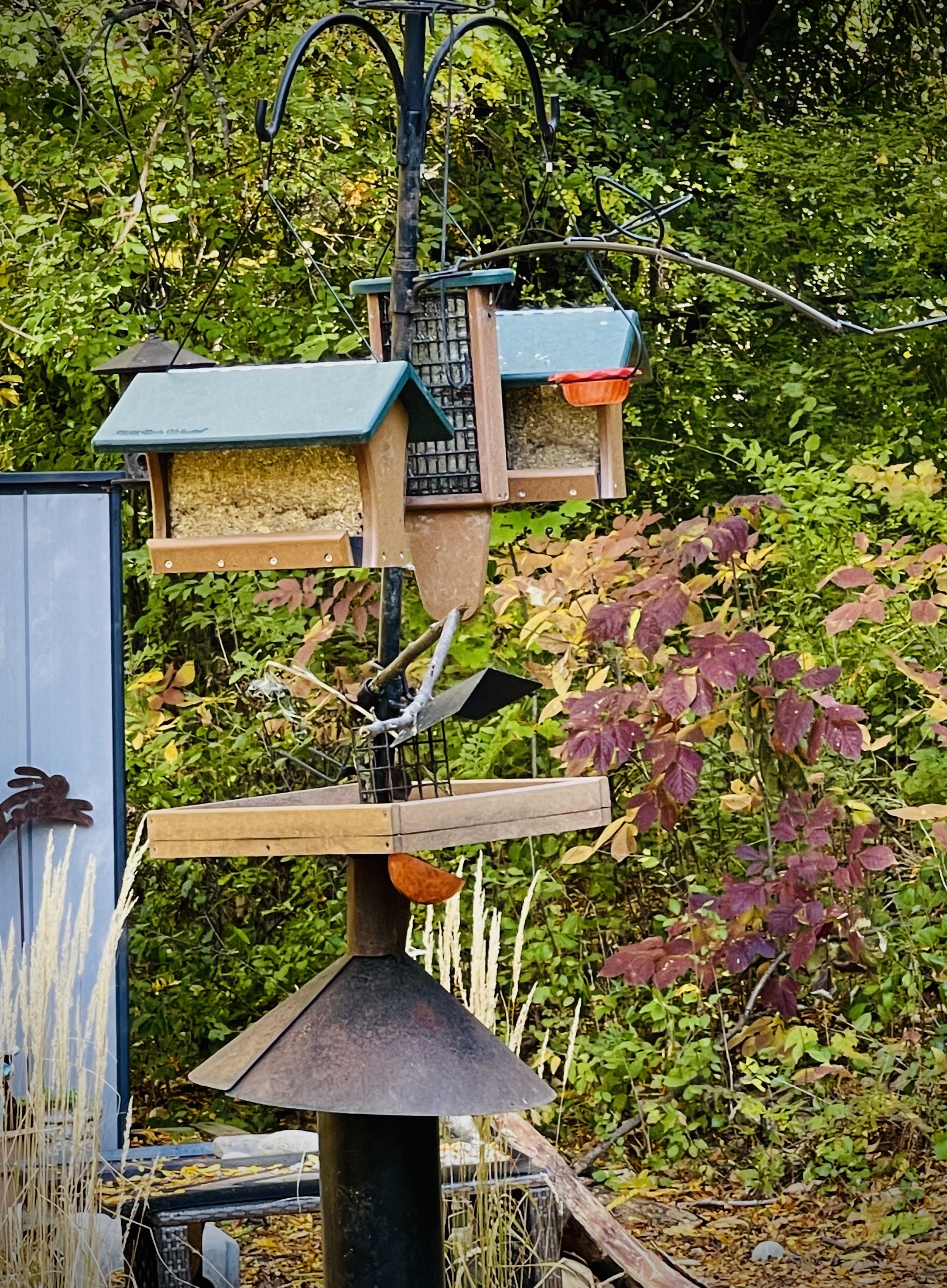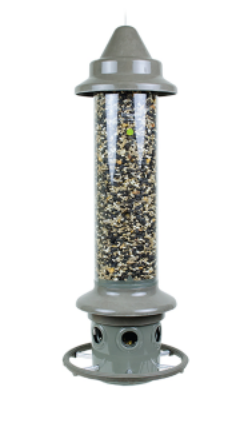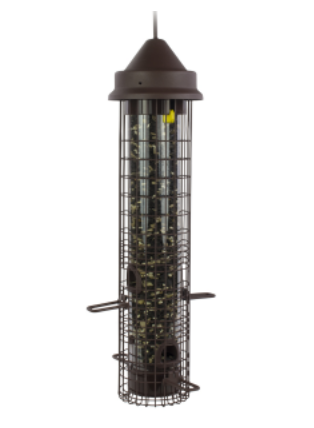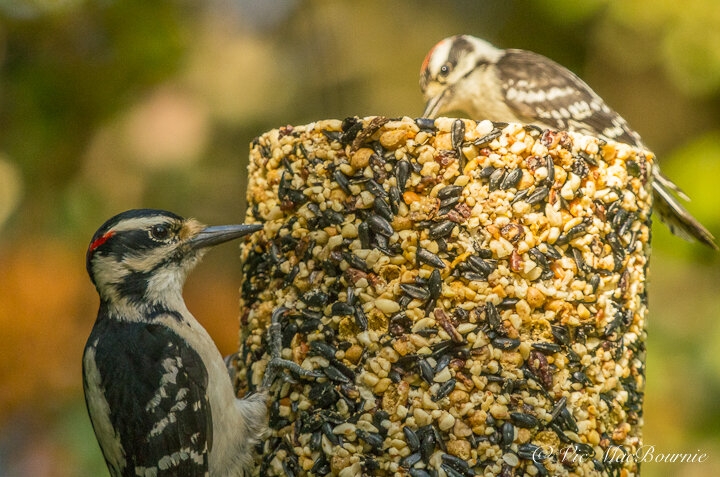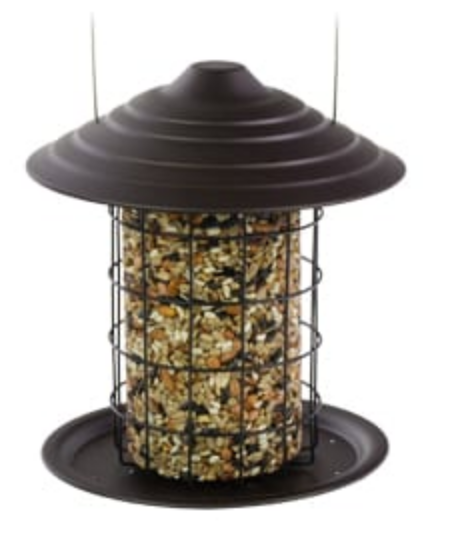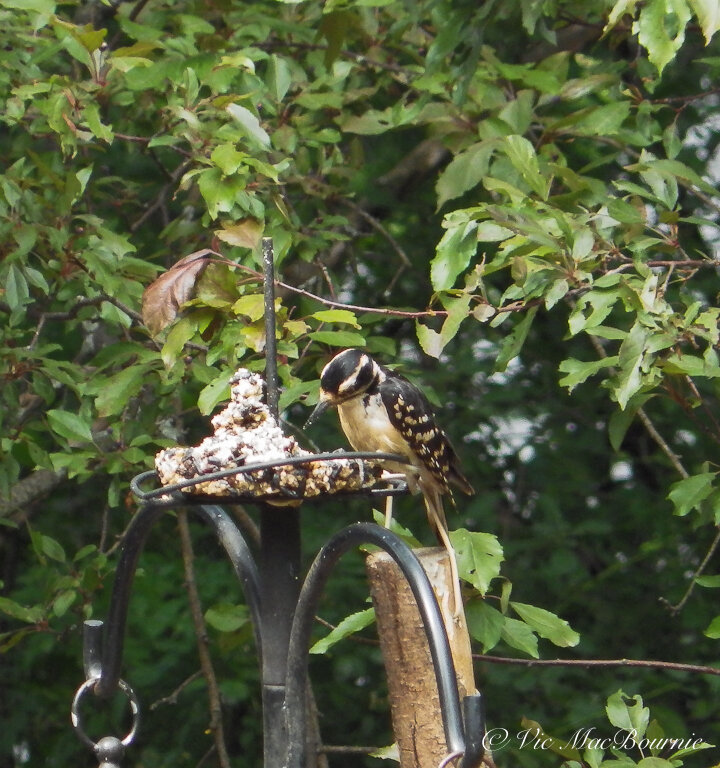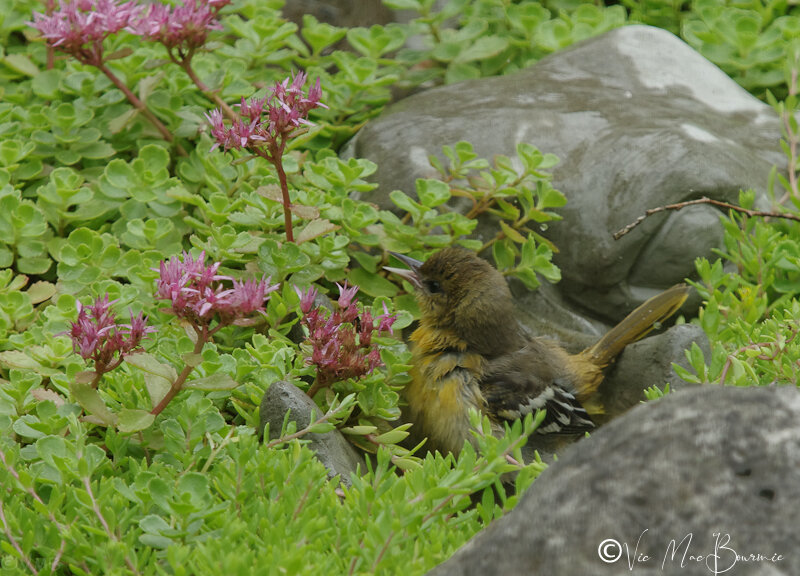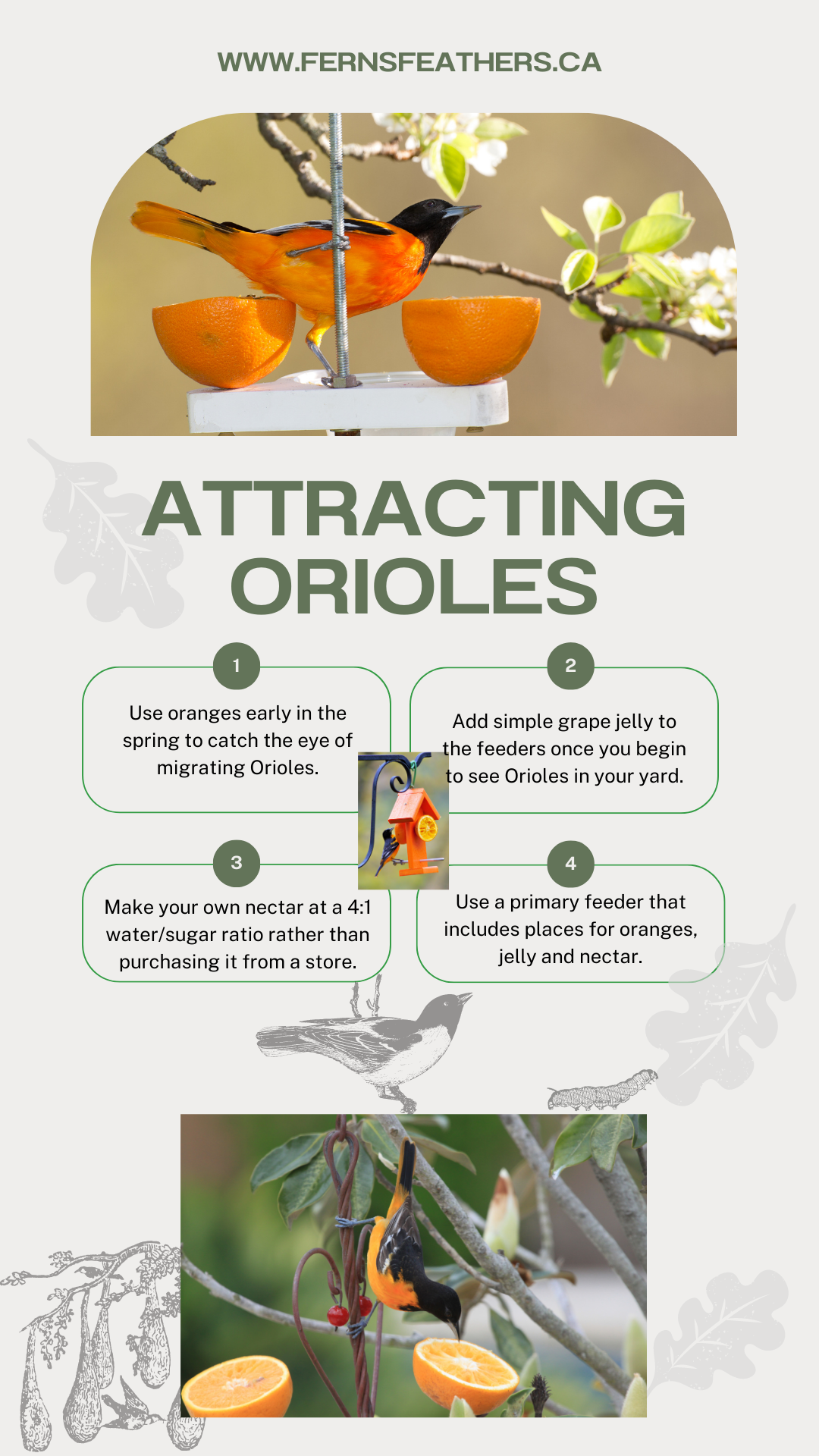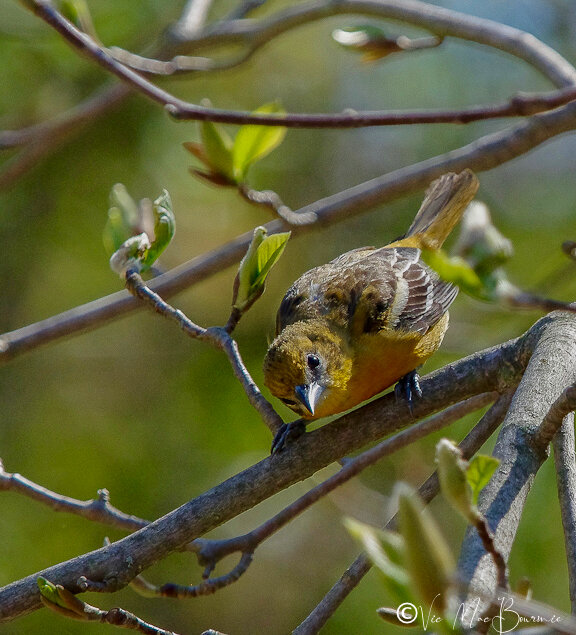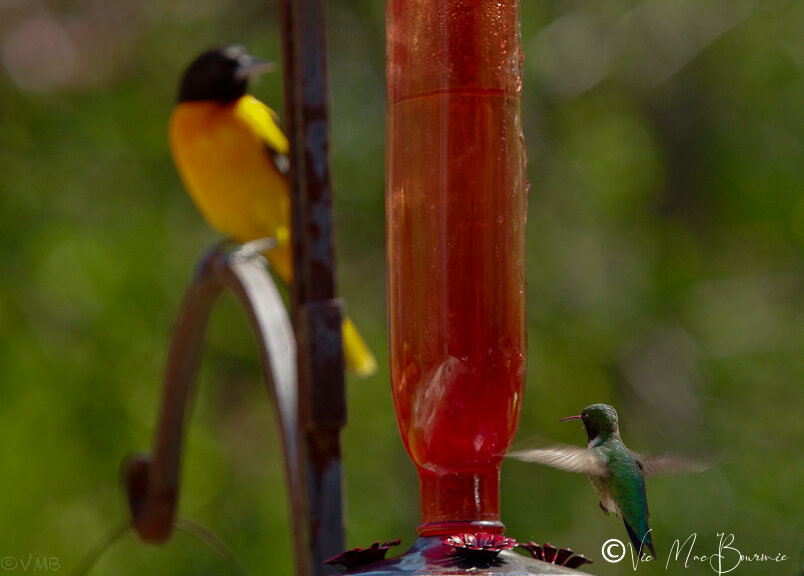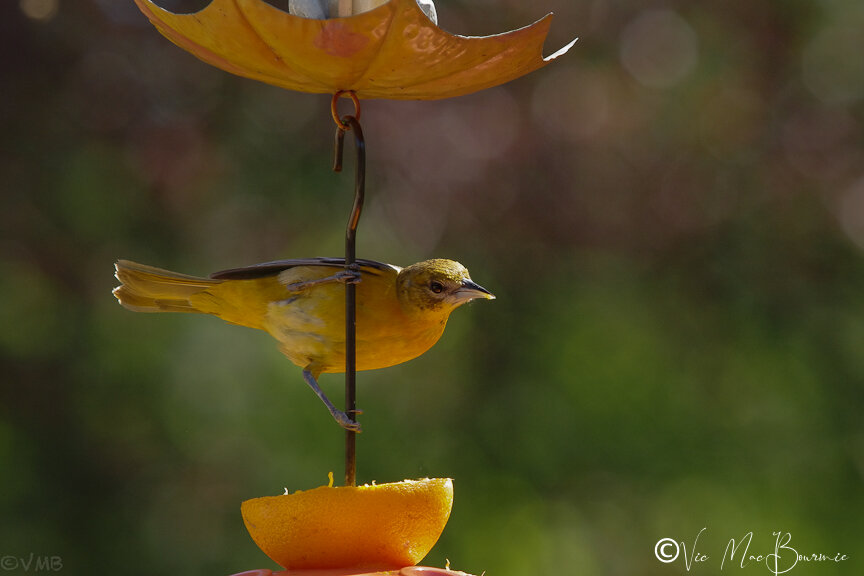Bird feeders for sale: Cashing in on Kijiji and other on-line sellers
These bird feeders from Wild Birds Unlimited are a good example of the new recycled resin feeders available at a number of locations.
When it comes to bird feeders for sale, my best deals have come courtesy of on-line purchases.
Sure, there are some good buys from on-line sellers like Amazon, Wayfair and Gardener’s Supply Co., but my best buys are local purchases courtesy of Kijiji, Craigslist, Facebook Marketplace and other local on-line garage sale type sites.
It may take a little more effort to find these items on places like Kijiji and Craigslist and arrange for pickup, but anyone who is starting out in backyard bird feeding and are looking to save a lot of money getting started, would benefit from spending time regularly checking for items on Kijiji, Craigslist, other on-line garage sales and even local thrift stores.
It’s not unlike creating a woodland garden, time and patience is key to your success.
(For more on creating a budget-friendly garden check out my story here.)
If you are looking to set up a bird-feeding station, be sure to check out Setting up a Bird Feeding Station.
My latest Kijiji purchases are two excellent bird feeders – one a top-of-the-line Wild Birds Unlimited recycled plastic hopper feeder in perfect condition and the other a brand new three-tube copper-look feeder still in its original box. Both set me back less than $35 Cdn. – $19 for the Wild Birds Unlimited hopper and $15 for the copper feeder.
New from nature stores or birding stores, these feeders are double and triple the costs you pay on these on-line sites. I’ve even seen entire bird feeding stations with poles, hooks and feeders sell on these on-line sites for pennies on the dollar. I suspect it’s the result of people who try feeding the birds only to find that they are not interested or that the seed on the ground is attracting unwanted critters.
But we know how to deal with that problem. Check out my post for more on keeping mice and rats away from your feeders.
If you are looking to add to your arsenal of bird feeders on a budget, be sure to check out sites like Kijiji and Craig’s List regularly. These on-line sites are to birders, what thrift stores are to home decorators.
The Wild Birds’ Feeder alone, which has a lifetime guarantee, is more than $120 Cdn. brand new and worth every penny.
These are just the latest of a wealth of bird feeders, bird houses and other bird related products available on sites like kijiji that discerning shoppers can purchase at a fraction of the cost of buying new.
I strongly recommend purchasing the recycled resin bird feeders rather than wood ones. Take a moment to check out my full post on Why we should buy recycled resin feeders.
Kijiji, Facebook marketplace and Craigslist are really just on-line garage sales people use to sell items they no longer have a use for anymore. There are others as well. Many neighbourhoods have their own on-line marketplace where similar deals can be found. Local thrift stores are also good places to visit regularly to pick up garden and bird products on a budget.
These are perfect places to cash in on homeowners who, for some reason, have decided that feeding the birds is no longer something they are interested in continuing.
Maybe it’s the mess that bird feeding can create, the critters it may attract, or the expense of purchasing food that mostly goes to feed the local squirrel population that makes the sellers decide that this bird feeding hobby is not for them. Whatever it is, if you are willing to wait and check the listings regularly, there are often lots of choice available for those of us who have committed to feeding the birds.
In just the last year, I have purchased two bird feeders, two screech owl houses, a rustic bird house/feeder and three bird baths from sellers on Kijiji. I could have bought a lot more if I really wanted, but that’s a pretty impressive haul as it is.
In fact, these on-line garage sales are the first place I go whenever I’m looking to make a purchase. Although birding supplies seem to be in abundance, I have picked up everything from a large water pond container, and complete bubbling rock system (including the bubbling rock), to a nice little native White Pine tree from sellers.
Outside of gardening circles, other purchases include ipods, audio equipment, cameras, camera equipment, car parts and a truckload of square-cut blue flagstone that became an integral part of our garden structure.
A WBU classic hopper bird feeder for under $20
Back to my latest buy. If you are not familiar with Wild Birds Unlimited recycled plastic hopper feeders, you should definitely check them out. They are among the best feeders you can purchase and there were actually two of these feeders available on Kijiji recently when I looked.
These high-end feeders and similar ones are not impossible to find because of what I wrote earlier about new birding enthusiasts who lose their enthusiasm for one reason or another.
There are many reasons people decide to no longer feed birds. The couple I bought the feeder from told me they were moving and would not have a yard to feed birds any longer.
Without a doubt Wild Birds Unlimited products are among the best available. Products from nature and bird stores tend to be top notch but good buys are available on home made bird houses and bird feeders as well.
To make it even better, the heavy-duty, high-quality feeders made from recycled plastic are actually helping the environment by recycling plastic bottles.
In the words of Wild Birds Unlimited: “Imagine a wood-free bird feeder that actually looks like wood! Our EcoTough® Classic won’t crack, fade or rot and has a lifetime guarantee. The Classic has curved ends so you can see birds feeding on both sides at the same time. Perch drains allow seed to drop out of the feeder for ground-feeding birds to eat, and angled perches let empty seed hulls be blown away by the wind. The removable screen bottom is treated with EcoClean® Antimicrobial Product Protection, providing 24/7 product protection. EcoTough® feeders and houses are environmentally friendly, high quality products that are made from recycled plastic milk jugs. These feeders and houses prevent used milk jugs from making their way into our landfills.
To check out Wild Birds Unlimited feeders go to their website here.
Triple-tube feeder delivers for a variety of birds
Anyone who is a regular Costco shopper knows to grab the deal while you can because it will not likely be there on your next visit.
That’s exactly what happened to me when I passed on a beautiful triple feeder several years ago. On my next visit to Costco, I strolled through the doors – cash in hand and eager to buy – only to discover that model was sold out and replaced by a similar looking feeder, but one that sported only a large, single feeder tube. I bought that one and have used it for years. Unfortunately, it’s beginning to show its age and it’s almost time for a replacement.
So, when I saw the triple tube feeder, still in the original box for a fraction of the cost of the original, I snapped it up.
Who says you can never get a second chance?
The triple-tube feeder really delivers when it comes to attracting a variety of birds.
Unlike the single-tube feeder that can deliver only a single food source, the triple tube can provide, for example, a finch blend, a tube of highly desirable black-oil sunflower and maybe a general no-mess blend. The mix can change depending on the season and, of course, during migration when white prosso millet can be offered in one of the tubes to attract Indigo Buntings.
The result is a greater variety of backyard garden birds.
And isn’t that what it’s all about.
While I get great enjoyment from my bird feeding stations, providing natural food sources to our feathered friends is always the goal we should aspire to in our gardens. I have written a comprehensive post on feeding birds naturally. You can read about it here.
More gardening on a budget links
Ten money-saving tips for the weekend gardener
DIY Bark Butter feeder for Woodpeckers
DIY reflection pond for photography
Click & Grow is ideal for Native Plants from seed
Remove your turf and save money
Hiring students to get your garden in shape
• As an affiliate marketer with Amazon or other marketing companies, I earn money from qualifying purchases.
Squirrel proof bird feeder strategies: Going for gold
Squirrel proof bird feeders are important to maintain a positive bird feeding experience. There are different ways to achieve that with varying degrees of success.
Best squirrel proof bird feeders: How to set up a feeding station and cages to keep them out
Our squirrels train everyday to beat us at our own game. Like the ultimate Olympian, they don’t seem to give up, don’t feel fear, and don’t seem to care about a little pain or even feel sorry for us when they win gold and walk away with a full belly of our finest bird food.
A cage helps, so do weight-sensitive feeders, but it takes more than just throwing them up in the nearest tree to guarantee successs.
So how do we keep squirrels out of our bird feeders?
They know what so many of us fail to accept – there are no squirrel proof bird feeders. There are feeders that work well most of the time and baffles that stop them in their tracks – for a time anyway – but there is nothing that can guarantee that squirrels aren’t getting fed on any given day.
We can try to keep squirrels at bay with a host of elaborate combinations baffles, cages and pressure sensitive feeders, but in the end there is always that one squirrel that accepts any challenge we throw at it with great gusto.
I have a name for these squirrels. I call them my Olympic calibre squirrels and right now we have one that comes in the form of a large grey male squirrel that, I swear, has no respect for me, my expensive bird feeders or the baffles meant to keep him on the ground.
My approach to keeping the squirrels off my feeders is a simple one and involves a single, centralized feeding station in an area where the squirrels are unable to access from above or from ground level.
He may not respect me, but I have the utmost respect for him.
I can live with one squirrel occasionally getting up on the feeder. The problem is when the entire neighbourhood has access to my expensive feed.
And, I can say with great certainty that there are very few yards with more squirrels than mine. Winter, spring, summer, fall, it doesn’t matter. There are always a handful of squirrels looking for a handout. Grey, black and red squirrels with a good mix of chipmunks thrown in just for fun.
Our resident red fox has taken care of some of them but the squirrels and chipmunks are always ready to restock with their kin whenever the numbers get manageable.
So it goes without saying that my vigilance is paramount at all times.
Harming squirrels is not the answer
First, let me say that I never harm our squirrels in any way. I don’t use the hot, spicy bird seed and I refuse to use the spinning feeders that just seem cruel to me. Maybe the squirrels like to go for a spinny ride once in a while, but I can’t help but think that the spinning feeders go just a little too far to protect a handful of bird seed.
My approach to keeping the squirrels off my feeders is a simple one and involves a single, centralized feeding station in an area where the squirrels are unable to access from above or from ground level. Although there are a lot of trees around the feeder, any limbs are kept cut back enough that even an Olympic calibre squirrel can’t score a medal with its best jump.
By using a bird feeding station rather than individual feeders, I am able to use a number of different, less expensive feeders and specialty feeders that the squirrels can’t get to. These include everything from simple hopper feeders to suet feeders and compressed seed cylinders.
The key is to keep the feeding station away from areas that allow the squirrels to jump up or down on the feeders.
I could give readers specific distances that the feeder station needs to be away from objects where the squirrels are capable of leaping from, but I think every situation is unique and needs a certain amount of individual experimentation. A good starting point, however is at least four feet off the ground and about ten feet from above for the daring aerial acrobats.
Our biggest weakness is usually an approach from ground level where, like a basketball player, a good vertical jumper can score almost every time.
The most success our squirrels have had is when I have left a feeder dangle too low to the ground.
Our most talented athletes manage to take a running leap off the large baffle flinging themselves into the air – often with an impressive twist or even what appears to be a salkow? – and then grasping the feeder with a toe hold any Olympic wrestler would be proud to have in their arsenal.
Squirrel and raccoon baffles are excellent deterrents
I use a combination of a large steel raccoon baffle as a first defence followed by a cap baffle (see image above) that sits on top of the raccoon baffle and provides the final defence. If they can jump past this combination, the bird seed is toast.
Once defeat is guaranteed, I’ve got one more deterrent that works well. Like any good defence, it involves bending but not breaking and works on the premise that all that work to get up on the feeders probably isn’t worth it.
I like to call it “the pantry is almost empty but go ahead and help yourself.”
It involves simply refraining from the urge to fill up your feeders to the point where it’s not really worthwhile for the squirrels to make the effort to get on the feeders. This won’t stop them for a second, but it will cut your losses if one or two manage to out jump your barriers and go for gold.
What if you can’t or don’t want to use a single pole bird feeding station?
There are lots of reasons to not want to use a centralized feeding station in your yard.
I love the look of beautiful bird feeders hanging in a tree being visited by cardinals, chickadees and a host of finches.
It’s an idyllic look in any woodland garden and one that we should all be able to enjoy without the annoyance of having squirrels swinging like monkeys from every bird feeder in the yard.
There are lots of options available. A quick search on Amazon provides a long list of squirrel proof feeders with some obviously more effective than others.
Squirrel deterrent feeders can be expensive
The answer involves the ability to dig into your pocket, pull out your wallet and hit the cashier at the high-end bird feeding store with your credit card without flinching.
It can get expensive.
A good feeder is not cheap, but there are reasons feeders designed to keep squirrels at bay without a series of baffles and bobbles can get very expensive.
First there is the feeder itself. If you are buying, pay what it takes to get a good one preferably one that shuts out squirrels and other critters depending on their weight.
Wild Birds Unlimited, for example, sells its “Eliminator” model that closes off access to the seed once the squirrel sits on the base of the feeder.
Wild Birds Unlimited describes how the feeder works: “When a squirrel touches the perches or perch ring, its weight closes the seed ports, foiling its seed-stealing plot. The Eliminator’s unique technology allows you to set the sensitivity level, so you can also exclude large birds such as pigeons or doves.”
Does it work? Absolutely. Can squirrels figure out a way around it? Absolutely. They will try their best to hang from a branch or even the top of the feeder so they do not add weight to the spring loaded seed dispenser.
By positioning the feeder in a location that makes it difficult for the squirrels to access it from a low hanging branch, the chances of keeping the squirrels at bay increases. Consider adding a half dome to make access from the top more difficult.
But even if the squirrels can’t extract seed, the raccoons will take their turn at it once the sun goes down. The result can be an expensive birdfeeder on the ground and susceptible to a hungry, snarling raccoon. I don’t like the feeder’s chances here.
Caged bird feeders are a good choice: Droll Yankee is top choice
Add a solid cage around the feeder and the problem of squirrels and even raccoons is more or less solved.
The best caged feeders work very well. There is a reason Droll Yankee feeders are a little expensive in comparison to other feeders. Their reputation as a company that builds solid feeders that work well is undeniable.
The Droll Yankees Domed Cage Sunflower Seed Bird Feeder is an example of a bird feeder, cage and dome built to keep the critters away while providing excellent access for he birds to high quality seed.
The six feeding ports on the feeder that takes 2.5 pounds of food provides plenty of choice for smaller birds to feed.
The cage allows our smaller songbirds to eat while keeping larger birds like blue jays and starlings away from the feeders. At the same time, squirrels and other undesirables can’t get to the feeders.
The plastic dome provides some shelter for the birds during inclement weather, but more importantly helps to keep the seed dry during rain or snow storms.
Of course the Droll Yankee feeders are not the only recommended caged feeders.
The “Fundamentals Squirrel Proof Feeder” from Wild Birds Unlimited is anotheer effective caged feeder. They describe their Fundamentals feeder in the following way: “Our Fundamentals Squirrel Proof feeder is weight-sensitive, so when a squirrel gets on the feeder the feeding ports close, denying access to the seed. Birds can use the four perches or they can cling to the metal shroud to feed.
If it makes sense to add a dome over the entire feeder assembly, it can go a long way in keeping the bird seed dry, while at the same time helping to keep squirrels, chippmunks and raccoons off the feeder.
If raccoons are a problem, just try to remember to take the feeder in for the night or locked away in a safe spot outside away from the racoons but also in an area where mice and rats are not attracted to it. A large galvanized garbage can with a solid lid works for me.
Seed cylinders: One of the best feeders for backyard birds
Seed cylinders are an excellent way to feed backyard birds. The cylinders keep the birds at your feeder longer and can be changed depending on the season and the type of birds you are trying to attract.
Woodpeckers, nuthatches, cardinals love compressed seed cylinders
When it comes to feeding backyard birds, there really isn’t a better combination than a compressed seed cyclinder fitted to your feeding station.
I have had my “ simple spike” on my Wild Birds Unlimited Advanced Pole bird feeding station for several years and am so impressed with it that I consider it (and most of the birds agree) my primary feeding source for our backyard birds.
Why are seed cylinders so popular?
Seed cylinders not only bring in a large variety of birds, they keep them at the feeder longer so you can appreciate them more, and a single large cylinder can last for weeks compared to the equivalent amount of feed in a typical hopper-style feeder. They are also super convenient to use and are available in a variety of seed combinations meant to attract different birds at different times of year.
Seed cylinders are long-lasting, which makes them especially useful if filling feeders is difficult for you or you’re going on vacation and will be unable to fill your feeders for several days. The cylinders are especially great summer food for the woodpeckers during the heat of the summer when traditional suet feeding can be a challenge.
Blue Jays are also big fans of the compressed seed cylinders as well. Click on the link for more on two of my favourite Blue Jay feeders including the compressed seed cylinder.
The cylinders help to keep birds at the feeders longer because they have to work at the seeds to remove them from the cyclinders. At a traditional feeder, the birds often swooping in, grab a bite and take off, before you can even appreciate them. Seed cylinders can give you a few extra moments of enjoyment.
Our cylinder feeder attracts a host of birds including plenty of woodpeckers who enjoy hammering away at the cylinder to obtain their dinner.
Five Great reasons to use seed cylinders
Seed cylinders are convenient to use. They do away with bulky bags of seed and the waste that can occur when trying to load loose seed into feeders.
They keep birds at the feeder longer so that you can get a better look at the birds. They are especially useful to get good looks at more rare birds who visit such as Indigo buntings and woodpeckers.
Seed cylinders are available in several combinations aimed at different seasons and bird-feeding mixtures.
No-melt seed cylinders provide an excellent way to attract woodpeckers during warmer months when suet is not appropriate.
The feeders and seed cylinders are available in many sizes, including pucks where you can offer a variety of seed mixes at a single feeder.
The Advanced Pole system loaded with various feeders, including the seed cylinder at the top of the pole.
I purchased my cylinder spike probably ten years or more ago as a simple, inexpensive solution to replace an aging wooden open feeder.
I was looking to replace my homemade feeder with another similar open hopper-style feeder, but noticed the variety of seed cylinders available with the spike system. At the time there were far fewer choices than there are today, but still enough to convince me to move away from another hopper-style feeder.
Since then, Wild Birds Unlimited and other manufacturers have developed a number of newer feeders designed to work with their seed cylinders. (Here is a link to their assortment of cylinder feeders).
One of the drawbacks to my spike is that it does not provide any protection for the seed cyclinder from rain and snow.
As a result, the cyclinder can break down prematurely during periods of heavy rain and humidity. Although the birds may appreciate the ease at getting at the seed during these times, I prefer to make them work a little for their dinner.
Today’s cylinder designs solve the problem of an unprotected cylinder open to the elements. Most have a roofing system of some kind built into them to provide top-down protection to the seed cylinders and reduce the amount of premature break down.
I’m not sure our blue jays and woodpeckers would be happy if a roof covered their favourite feeder. They mostly just stand on the seed cylinder and pound away at it from the top.
The result, of course, is that the birds’ hard work further breaks down the top of the cylinder and opens it up to the elements.
Wild Birds Unlimited feeder complete with a cage to prevent large birds from dominating the feeder.
The new designs not only provide a roof for seed protection, several have cages to keep the larger birds from dominating the seed cylinders and giving our smaller birds a better opportunity to enjoy the benefits the seed cylinders offer.
There is no doubt that the larger backyard birds, including blue jays, woodpeckers, cardinals, grackles and even crows, descend on our cylinders and dominate them at times.
I’ll take advantage of any opportunity to restrict their access to the cylinders.
WBU’s globe cylinder feeder’s cage is large enough to accommodate mid-sized birds like indigo buntings, sparrows, nuthatches and downy woodpeckers just to name a few. The feeder handles the regular-sized cylinders which include the no-melt cyclinders. The cage also acts as perches for the birds.
And, if the pesky squirrels manage to get up to your feeder, the cage represents another barrier to protect your expensive seed.
WBU’s Tidy feeder combines the best of all worlds with a built-in roof, a cage and a base to catch any fallen seed.
The Tidy Cylinder feeder is a great choice providing not only a roof to protect the seed from the elements and a cage to protect the seed from larger, more aggressive birds, it also includes a small, built-in catch tray to keep the seed from falling to the ground.
Other modern feeders provide open access to the cylinders, but add several perching areas to provide more access for smaller birds to enjoy their meal in peace.
A mostly eaten seed cylinder shows how the spike attaches to the pole and how the seed cylinder fits over the simple spike.
How the spike system works
Setting up my cylinder spike on the Wild Bird Advanced Pole system was simple. One of the benefits of investing in a system allows you to easily add various options.
The spike feeder simply inserts into the top of the pole system. Once attached, the seed cylinder (which comes with a hole drilled through the middle of it) is inserted over the spike. My feeder has a circular perch at the base that surrounds the cylinder, but most of the visitors simply jump on the cylinder and begin helping themselves.
Many of the new cylinder feeders are meant to hang from hooks rather than be inserted directly in the pole. This provides more opportunities to use them on any pole system or hung directly in trees.
How are the seed cylinders made
Seed cylinders are a compressed mixture of seed, nuts, and/or fruit and, depending on the mix, insects such as meal worms can be added. The feed is compressed into cylinders and mixed with Gelatin to hold the seed mixtures together.
Then it is cut to size and ready for use.
If you are on a budget or just looking to save some money, making your own cylinders is easy enough. There are several step-by-step “DIY” projects available on both Google and YouTube that will guide you through the process.
While I get great enjoyment from my bird feeding stations, providing natural food sources to our feathered friends is always the goal we should aspire to in our gardens. I have written a comprehensive post on feeding birds naturally. You can read about it here.
How to attract Orioles with oranges, jelly and insects
There is something exciting about looking out the window in May and seeing a flash of bright orange in the early spring. It’s a sure sign that the Orioles are back. And it’s not too late to get the Oriole feeders set up, the oranges cut up and the Jelly mixtures in place for the flush of Orioles.
Go natural: Provide insects and berries for Orioles
I’m sitting in my home office in the middle of May with a light dusting of snow on the ground watching Baltimore Orioles working one of the orange halves I left out on the feeder for them
Last year, I remember as many as seven swarming the feeder. They were feasting on oranges and nectar from a commercial feeder that I had put out for them to catch their attention as they migrated back to their more northern summer breeding grounds here in Canada, from winters in Mexico, Central and South America.
If you want to attract Orioles and keep them around year round, you’ll have to make sure your Woodland provides them with everything they need so they decide to call it home. That includes an upper tree canopy where they often build their nests.
While I get great enjoyment from my bird feeding stations, providing natural food sources to our feathered friends is always the goal we should aspire to in our gardens. I have written a comprehensive post on feeding birds naturally. You can read about it here.
Orioles live in open woodlands particularly those with deciduous trees and lots of insects.
Oranges will go a long way to entice Orioles to visit your yard in spring, but grape jelly, nectar (in the same 4 to 1 ratio of water and sugar used to attract hummingbirds) provided in commercial feeders and berries in your garden from native trees and shrubs will help to convince the birds to stay around all summer. Don’t forget to provide an abundance of insects, including meal worms, which is the main food of Orioles when feeding their nestlings and throughout the remainder of the summer.
A male oriole works an orange half on the top of an Oriole feeder filled with the same sugar water mixture used for hummingbird feeders.
Here in Southern Ontario and Eastern United States we are limited to the Baltimore and orchard orioles. There are actually nine orioles throughout the United States, but only five are common.
The Bullock’s is found throughout Western Canada and the United States.
Once you’ve got them, and providing you give them the requirements they need, they often return year after year to raise their young.
More on what are the best Oriole feeders here.
Spring migration troubles 2021
Of Note: In the spring of 2021 many homeowners who normally have had Baltimore Orioles in their gardens are reporting that the birds either did not show up or appeared for only a day or two and moved on never to be seen again. I usually have a large number of orioles in the garden throughout the summer raising their young. This year, although a few passed through, none stayed around for more than a day or two. I have seen similar reports of decreases in Baltimore Oriole numbers throughout southern Ontario into northeastern U.S.
There appears to be no obvious reason for this concerning turn of events. A late cold spell that ripped through the Great Lakes area right around migration time brought freezing temperatures, including heavy snow, which may have resulted in fewer birds surviving migration or more birds choosing to nest further south. I will try to update this page if there is any more news on the plight of the Orioles.
A young Oriole enjoys a bath in one of our on-ground water sources that happens to be a concrete antler belonging to our concrete moose named Bruce (as in Springsteen) the moose.
It wasn’t too long ago when our Woodland garden was completely devoid of Orioles. Not that they weren’t around. People regularly talked about seeing them in the Conservation area surrounding us. I just never saw them in my garden.
Then I got serious about enticing these beautifully coloured birds into our garden.
Oriole nests are elaborate sac-shaped works of art
Now, they are not only here regularly in the spring and throughout the summer, a pair have even nested in a large maple at the front of our property. I don’t always find their nests, but I often see the young birds with their parents.
Orioles can take up to 12 days to build their elaborate, pendulous sac-shaped nests on the ends of branches in tall trees often in more open areas. Their nests are unique when it comes to North American birds’ nests.
In spring, the female oriole build’s her nest with thin, intertwined fibers that form what might seem like a delicate pouch but, in fact, can hold up to seven eggs.
For more information on how orioles build their nest check out audubon’s highly informative article on their site here.
Last year, a mother brought her entire brood to our on-ground water source where they had a great time splashing around in the ears of our concrete moose.
All it took to get them here originally was a couple of oranges cut in half and placed in areas where the Orioles are likely to see them. Now our neighbours have joined in to the excitement and put orange slices around their yard as well.
Once you have them, it’s time to add grape jelly to your yard. It has to be basic grape jelly, not a jam. You can buy special oriole jelly in plastic bottles at many good bird stores, but just buy a good grape jelly. I like to use Welch’s grape jelly, but any no-name jellies should be fine. Mix it with a little water and the Orioles will lap it up often choosing the jelly over the orange halves.
Orioles are attracted to the colour orange, so many of today’s feeders use the colour to catch the bird’s attention.
One trick that I like to use is after the orioles are finished with the orange half, I fill it with jelly. They seem to appreciate my effort. It’s a constant exchange of old oranges with new ones, and filling the spent oranges with grape jelly.
Five cool facts about orioles
• Orioles are in the same family as blackbirds and meadowlarks and are most often seen perched at the tops of trees or flitting through the upper foliage looking for insects.
• Their chatter is quite distinctive as is their call. Once you have heard it, you are unlikely to forget it.
• Watch your peas. Orioles enjoy fresh or frozen or dried peas
• Orioles live up to 11 years in the wild and longer in captivity.
• Female orioles become a deeper orange every time they molt. Older females can be almost as bright as their male counterparts
• Orioles got their names from the black and orange of Lord Baltimore’s family crest, which is similar to the family’s crest
• the Baltimore oriole is Maryland’s state bird
• Orioles have distinct alarm calls to warn of predators, but will not hesitate to mob and harass predators that threaten or come near nests.
Oriole feeders have come a long way
Many modern feeders will provide areas to mount oranges as well as cavities to put the jelly into. Some feeders also offer the Orioles several choices, including jelly, orange halves and nectar.
Some, such as the Birds Choice Flower Oriole Bird Feeder include a reservoir to hold grape jelly as well as places to mount orange halves. Look for feeders that also provide perches for several of the birds to comfortably and safely perch while they are eating. It’s not uncommon to have several at your feeders at once.
The nectar that is used for orioles is the same as the nectar used for hummingbirds. It should be made the same way – 4 parts of water to one part of sugar.
I like to boil my water first and then measure out the 4:1 ratio. The boiling water helps to dissolve the sugar more perfectly and seems to keep my feeders’ nectar clear longer. Remember to let it cool to room temperature before filling your nectar feeders.
Don’t be surprised if the orioles start to feed from your hummingbird feeders. They are a regular at my feeders, even when they struggle to fit on them properly.
In saying that, however, it’s not uncommon for our hummingbirds to drink from the oriole feeder.
Orioles love moving water
Don’t underestimate the value of moving water. Although orioles get much of their water needs filled by nectar from our feeders and plants, water still plays an important part in attracting these beautiful birds. They are especially attracted to the sight and sound of moving water, whether it’s a fountain, a dripper or a bubbler. I wrote a full article about converting a dripper into a solar fountain. You can read it here.
Five of a total of seven Orioles pictured here taking advantage of our various feeders that included orange halves, home-made jelly feeders and a nectar feeder.
In summer meal worms are an excellent choice for Orioles
Finally, once you have attracted the Orioles, you will need to be prepared to change their diet as summer approaches. You may notice them using your orange and jelly feeders less and less. That’s when to start shifting what you are feeding them from oranges and jelly to meal worms, either live ones (which are ideal) or dried ones. It’s a good idea to rehydrate the dried meal worms with some water before putting them out in your feeders. Or, put them in a dish and add a little water to rehydrate them. This makes it easier for the birds to swallow them.
Both types are available at bird-feeding stores or through Amazon. Feeding meal worms will not only attract Orioles to your garden. They are the prime source of food for Bluebirds at a feeder as well as robins and other insect eating birds.
Special meal worm feeders are also available. Because squirrels are not interested in meal worms, these feeders can hang anywhere in the garden including from nearby tree branches.
The Baltimore Oriole spends its winters in florida and farther south in Central America. They migrate north to breed throughout the northeast United States and into southern parts of Canada.
Insects are the birds’ primary food source in summer
Although they are attracted to Oranges and jellies on their migration routes, their real food is a variety of insects.
The Orioles that visit our gardens are using the oranges and jelly as a quick burst of energy. By the summer, when they are raising their young, they spend much of their time foraging for insects to feed their babies. The parents will still come to the feeders for quick bursts of energy, but they may also almost disappear if they are not nesting nearby.
Besides mealworms, Orioles will also eat wasps and other insects. It is vital to avoid using pesticides in the garden to ensure a large supply of insects for these birds. During the summer, when orioles are feeding their young, insects may provide up to 90 per cent of an oriole’s diet.
Native shrubs and bushes that produce an abundance of berries are excellent food sources for these birds. Consider planting elderberries, blueberries, blackberries, serviceberries and raspberries just to name a few. I have written an entire article about the importance of serviceberries in our wildlife gardens. You can read it here.
Although oranges are their favourite fruit, they will also eat apple, peaches, bananas and berries.
Providing them with special suet mixes that include fruit pieces and berries is a good source of high energy for them.
Plant bright, but dark-coloured fruits such as mulberries, cherries and purple grapes as well as raspberries. They also like flowers that produce high quantities of nectar including vines such as trumpet vines.
As an Amazon Associate I earn from qualifying purchases. This page contains affiliate links. If you purchase a product through one of them, I will receive a commission (at no additional cost to you) I only endorse products I have either used, have complete confidence in, or have experience with the manufacturer. Thank you for your support.


